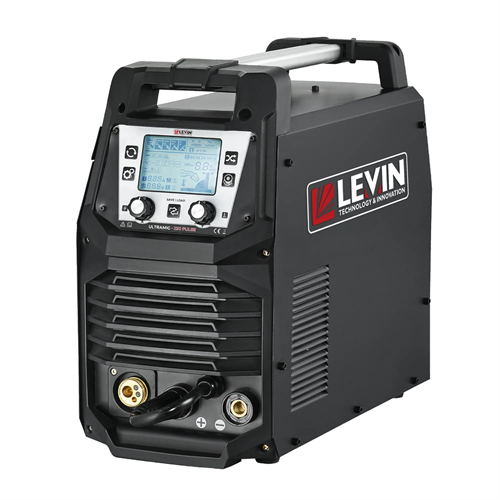Когато става въпрос за ремонт на автомобили, изборът на правилния заваръчен апарат е от решаващо значение за постигане на качествени резултати. Както MIG (инертен метален газ), така и TIG (волфрамов инертен газ) заварчиците се използват широко в автомобилните ремонти, но всеки има своите специфични предимства и приложения. Ето ръководство, което ще ви помогне да изберете между MIG и TIG заварчици за ремонт на автомобили.
1. Разбиране на основите
MIG заваряване: MIG заваряването използва непрекъснато захранван телеен електрод и защитен газ за създаване на заваръчен шев. Известен е със своята скорост и лекота на използване, което го прави идеален за начинаещи и за проекти, които изискват по-малко прецизност.
TIG заваряване: TIG заваряването използва неконсумативен волфрамов електрод и изисква повече ръчно управление. Той произвежда чисти, висококачествени заварки, но изисква повече умения и търпение.
2. Обмислете материала
За ремонт на автомобили материалът, който заварявате, играе важна роля при избора ви:
Стомана: MIG заварчиците са идеални за заваряване на стомана, особено мека стомана, тъй като предлагат бързи заварки със силно проникване.
Алуминий: TIG заварчиците често се предпочитат за заваряване на алуминий поради чистите, прецизни заварки, които произвеждат. Въпреки това, MIG заварчиците могат да се използват и с правилната настройка, като пистолет за макара.
По-тънки метали: TIG заваряването е отлично при работа с тънки метали, които са често срещани при ремонт на каросерии. Прецизният контрол гарантира, че металът няма да прогори.
3. Оценяване на нивото на умения
Удобен за начинаещи: Ако сте нов в заваряването, МИГ заварчиците са много по-лесни за овладяване. Автоматизирането на подаването на тел и подаването на газ означава, че можете да се съсредоточите върху насочването на заваръчния шев, без да се налага да контролирате много променливи.
Усъвършенствана прецизност: TIG заварчиците са по-трудни за работа, изискват умения за контролиране както на волфрамовия електрод, така и на пълнителния материал. Това е идеално за опитни заварчици, които се нуждаят от детайлни, чисти заварки на деликатни автомобилни части.
4. Скорост на заваряване спрямо прецизност
Скорост (MIG заваряване): За големи, структурни ремонти, като например фиксиране на рамки или панели на автомобили, MIG заваряването е по-бързо. Това го прави подходящ, когато скоростта и ефективността са по-важни от прецизността.
Прецизност (ВИГ заваряване): За сложна работа като заваряване на тънки панели на тялото, изпускателни системи или алуминиеви части, ВИГ заваряването предлага превъзходен контрол и прецизност.
5. Преносимост и захранване
MIG заварчици: Те обикновено са по-обемисти, но се предлагат в различни мощности. Ако правите чести мобилни ремонти, по-малък, по-преносим MIG заваръчен апарат може да е по-подходящ за лесно транспортиране.
TIG заварчици: Въпреки че като цяло са по-компактни, TIG заварчиците често изискват по-специализирано оборудване и може да се нуждаят от повече мощност. Уверете се, че разполагате с правилното захранване за избрания от вас ВИГ заваръчен апарат.
6. Разходи и бюджет
MIG заварчици: Обикновено са по-евтини от TIG заварчиците, което ги прави по-достъпна опция за общи ремонти на автомобили. Те също са по-евтини за поддръжка, като консумативите като тел са сравнително евтини.
TIG заварчици: По-високата първоначална цена и по-скъпите консумативи (като волфрамови електроди) правят TIG заварчиците по-голяма инвестиция. Въпреки това, ако прецизността и качеството са вашите основни приоритети, цената може да е оправдана.
Заключение
Когато избирате между MIG и TIG заварчик за ремонт на автомобили, помислете за вида на материала, вашето ниво на умения, естеството на ремонта и вашия бюджет. MIG заварчиците са идеални за начинаещи и големи структурни ремонти поради тяхната скорост и лекота на използване, докато TIG заварчиците предлагат превъзходна прецизност за по-деликатна, детайлна работа. Оценете специфичните си нужди и изберете заварчика, който най-добре отговаря на вашите задачи за ремонт на автомобили.

 EN
EN
 AR
AR
 BG
BG
 HR
HR
 CS
CS
 DA
DA
 NL
NL
 FI
FI
 FR
FR
 DE
DE
 EL
EL
 HI
HI
 IT
IT
 JA
JA
 KO
KO
 НЕ
НЕ
 PL
PL
 PT
PT
 RO
RO
 RU
RU
 ES
ES
 SV
SV
 TL
TL
 IW
IW
 ID
ID
 LV
LV
 LT
LT
 SR
SR
 SK
SK
 SL
SL
 UK
UK
 VI
VI
 HU
HU
 TH
TH
 TR
TR
 MS
MS
 BE
BE
 KK
KK
 KY
KY

